How did the video essay On the edge of history come about?
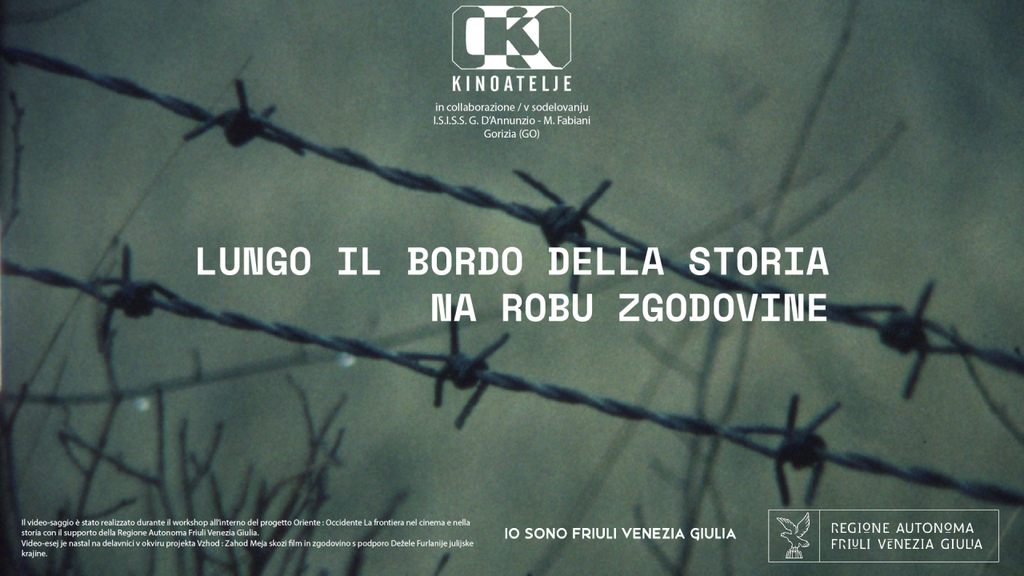
As part of the multi-year project EAST / WEST – Border through film and history, Kinoatelje explores life along the Slovenian-Italian border through moving images. One of the most important goals of the initiative is to educate young people about the history of our area and about cinematography. This is precisely why Kinoatelje decided to organize a workshop with 5th-year students of the Max Fabiani Art Lyceum at the Gabriele D'Annunzio State High School in Gorizia. The project ended with the realization of a video essay about the eastern Italian border. The main goal of the workshop was to give the students the opportunity to learn more about a historical period that is only covered in school programs to a lesser extent, about the world of amateur film and the reuse of archival materials. The importance of the workshop was also recognized by the project partners from the Italian historical archive Istituto Luce. There is a longer record about the course of the workshop written by the two mentors that was published on the institute’s website.
The workshop pursued two different goals, the first of which was of an educational nature. Participating students experience the Italian-Slovenian border on a daily basis, as it is an area they know well. They learned to perceive the border as an agreement, an imaginary line that separates two realities, something always present, but at the same time invisible. After just a few minutes' walk, they can find themselves in another country and experience its culture. However, along this border, which today seems to embody just another formal agreement, blood was shed even in the previous century. In a place where today these young people know only an invisible line, until thirty years ago there was a barbed wire barrier separating people who thought and lived in completely different, if not completely contradictory, ways. In the last hundred years, the inhabitants of the Slovenian-Italian border have experienced all the major upheavals of the 20th century: from the First World War to the Cold War and the wars in Yugoslavia in the 1990s. The workshop was therefore designed to enable young students to have a more informed view of their own past and to think about the broader topic of the border, which is more relevant today than ever before, especially in the light of recent international events that force us to think about this topic.
If the first purpose of the workshop was educational, the second purpose pursued a different goal. In 2018, Aljoša Žerjal, a filmmaker from Trieste and a member of the Slovenian minority, decided to donate his entire production to the Kinoatelje association. It consists of hundreds of 8mm and Super8 films, shot during almost half a century, from 1954 to the beginning of the 1990s. Although Žerjal has also participated in feature and experimental films, he has devoted himself mainly to documentaries in the recent years. He visited all corners of the globe and dedicated a documentary film to each trip: in 1962 he made Orient in Bosnia, focusing on Jajce and Sarajevo, and the following year he made Ohrid, a film about the border separating Macedonia and Albania. In 1968, he was in Mexico, where he filmed the lighting of the Olympic flame. In 1970, he visited Uzbekistan, where he filmed the reconstruction after the earthquake. In 1972, he immortalized the ruins of Machu Picchu. In 1980, he was in Moscow, where he recorded the lighting of the Olympic flame for the second time. In 1984, he made a documentary film La Via della Seta (The Silk Road), shot in China, in which he dealt with the topic of cultural contamination. In the second half of the 1980s and in the 1990s, he made several documentaries in Vietnam, Tibet, Patagonia, Pakistan and finally on Easter Island. These films were screened several times in various formats, but the fund that Žerjal donated to Kinoatelje also contains many unpublished materials. During his film career, Žerjal stored a series of recordings in a box with the inscription "No to bilingualism", mostly shot in Trieste and the Karst region. With these materials, he wanted to create a film intended for Italians, which would deal with the history of Slovenians. The work was never completed. Kinoatelje therefore decided to valorize these unpublished materials by making them available for the needs of the workshop.
This was crucial, as the reuse of these materials gave the students a better insight into the above-mentioned history, with an approach that opened up new avenues for the workshop. To make the video, the students made documentary footage of places important for the history of the Slovenian-Italian border. They carried out extensive historical research and a series of interviews with people who personally felt the tensions along the border. Finally, the students tried their hand at reusing archival image materials. Here, the approach was not limited to documentary film techniques. The students were thus given the task of treating archival pictorial material with the techniques of a video essay. A video essay is an audio-visual form of reflection, criticism and analysis carried out by re-editing the works being analyzed. It is a technique that was created to meet the most problematic demands of film criticism and analysis. One of the main problems with these activities is that they are mostly expressed in writing. Analyzing film material in this way is problematic, as it denies images in motion, i.e. reference medium. The video essay attempts to overcome this limitation. The images taken by Žerjal were then thoroughly analyzed together with the students and reused to create a new meaning.
Awareness of the importance of audiovisual archival material as a historical source has only recently developed. Many historians are still very reluctant to acknowledge the validity of these sources, even though the media landscape, especially documentary film, has demonstrated their power. The purpose of the workshop was also to highlight how much power an individual has over the traces of history. Žerjal's images of the demonstrations, which were hostile to bilingualism and were filmed in Trieste, carry within them not only proof of the existence of what happened, but also a communicative capacity that is somehow more direct than a written source which documents the event.
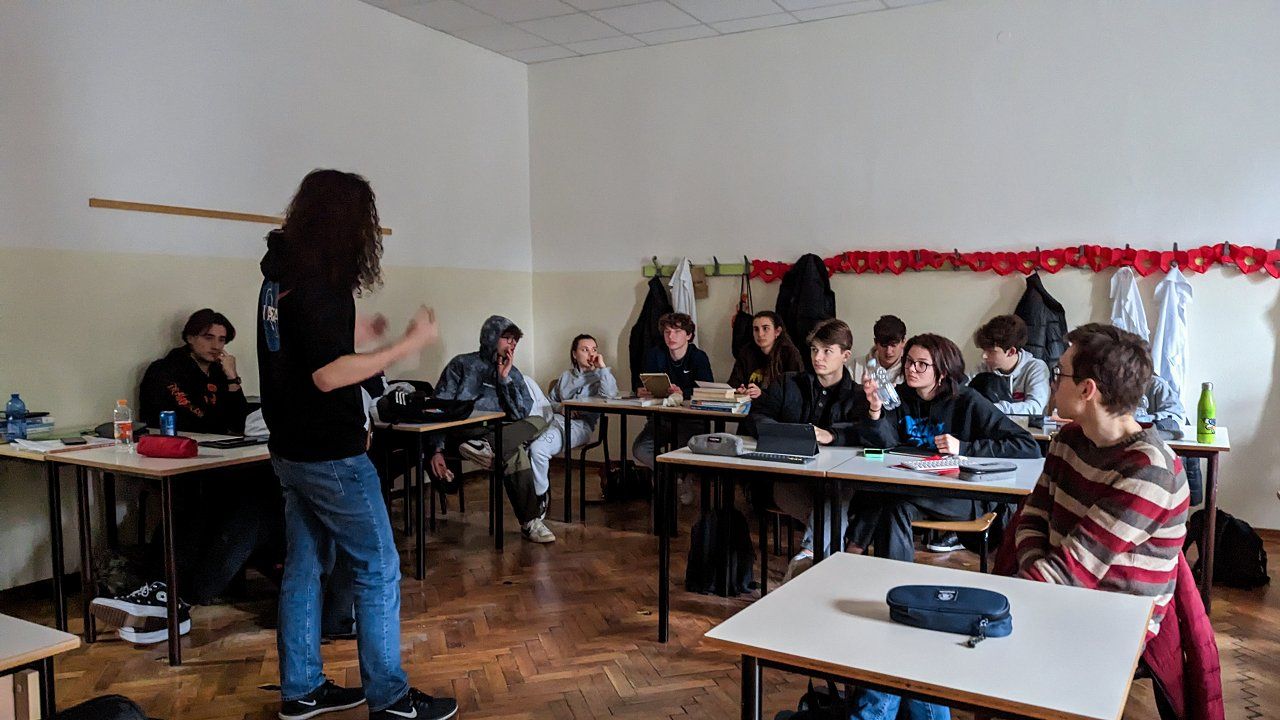
The introductory part was prepared and performed by history professor Alessandra Nardon, who spoke to the students about the period after the Second World War and presented the Cold War in the Italian border area in more detail, thus providing them with an appropriate basis for later analysis through pictorial material. She used a variety of materials, from film newsreels and television reports to radio recordings such as Roosevelt's. The first two lessons were of a theoretical nature. In the first, the emphasis was on propaganda, its characteristics at that time and those that have been preserved over time, its operation and dynamics, the tools it uses and the goals it pursues. In the second lesson, the media, namely the video essay, was discussed. Students were introduced to the basics of how an essay is composed, what approach to take while composing it, and given good examples to follow when thinking about this project.
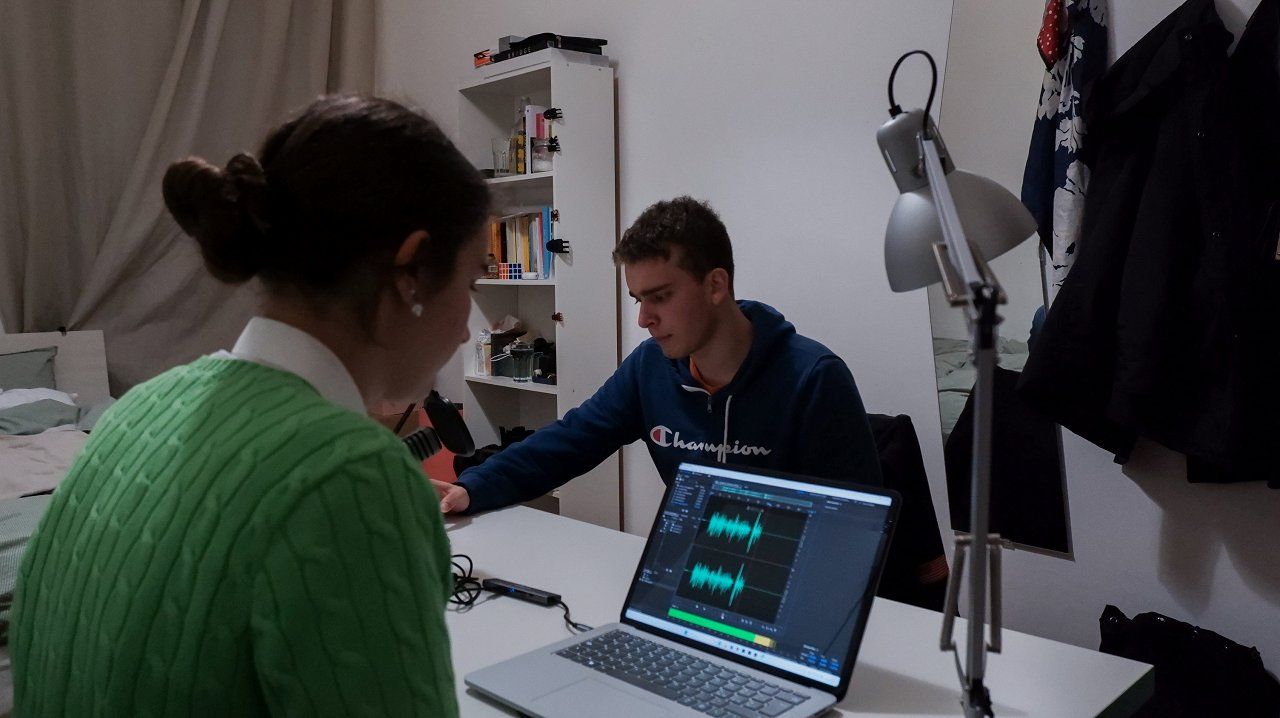
The work done by the students was then presented on May 9, 2023 in the House of Film cinema in Gorica, where the East - West, Border through Film and History symposium was held for the second time. At the end of the morning lectures, devoted to film archives and the use of moving images in education and for learning purposes, the video On the Edge of History, filmed by the students, was screened.
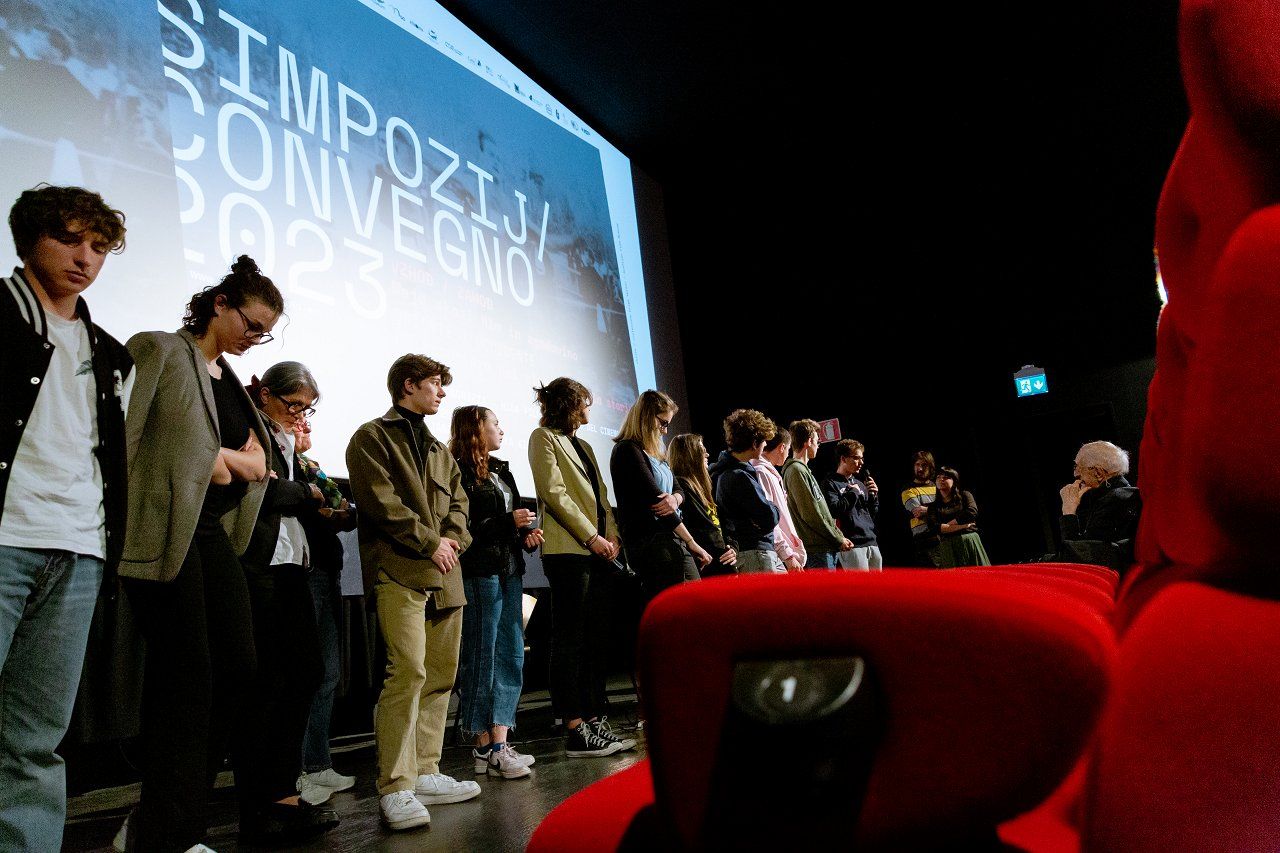
The work was very demanding for the students. Despite their excellent general education, none of them had ever dealt with the creative reuse of archival footage, and they had never even heard of a video essay until then. The difficulties were then overcome with the great drive of the group and some dedicated enthusiasts who worked late into the night for several days and thus contributed to the success of the project.
Lucia Giacomazzi, born in 2001, originally from the Province of Pordenone, graduated in November 2023 at the University of Udine from the DAMS study program - Audiovisual Media Sciences and Performing Arts. Her work experience includes various roles at numerous literary and film festivals, an internship in theater management at Kinemax in Gorica and a certain period in the press and communication office at CSS Teatro stabile di innovazione del FVG. She is currently pursuing a master's degree in Audiovisual Heritage and Media Education at the University of Udine and works as a hostess at the Palamostre and San Giorgio theaters in Udine.
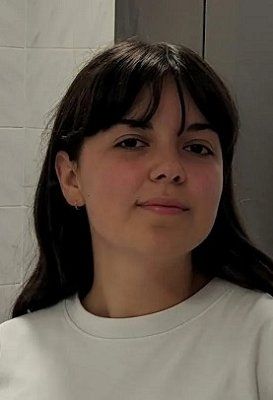
Antonio Dagostin was born in 2001 in Gorizia. He got acquainted the audiovisual world at the lyceum. He then enrolled at DAMS. He is currently a master's student in Audiovisual Heritage and Media Education at the University of Udine. Since 2022, he has been working with the Kinoatelje association, helping to organize workshops for schools and with the organization of the Tribute to a Vision film festival.
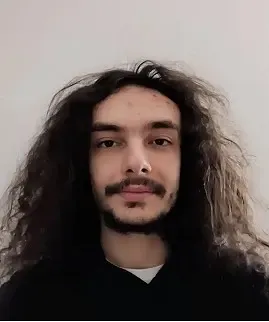
Announcements/
Catalogue and Screenings of the Project Oriente Vzhod / Occidente Zahod
04. 09. 2025On Friday, 5 September 2025, at 11:00, at Café Maks in Nova Gorica, within the framework of the Mesto knjige (City of Books) festival, the catalogue Oriente Vzhod / Occidente Zahod – The Border Through Film and History will be presented. The event is part of the “café matinées” series, which offers relaxed yet in-depth encounters with authors, thinkers, and creators.
Retrospective on the Move: The First Cross-Border Waypoints of Our Film Journey
18. 07. 2025Retrospective Oriente Vzhod / Occidente Zahod – Border Through Film and History, part of the official programme of the European Capital of Culture GO! 2025, launched its international tour in the first half of 2025. By July, it had visited eight countries and presented 31 films across 54 screenings, ranging from classics of Slovenian and Italian cinema to contemporary festival highlights, documentary essays and animated films.
Filmska umetnost kot orodje preseganja meja
09. 04. 2025Nekatere meje so vidne, druge nevidne. Nekatere ločujejo, druge združujejo. Obmejna regija med Slovenijo in Italijo je bila stoletja prizorišče prepletanja kultur, zgodovinskih preobratov in človeških usod. Lahko zgodovino pogledamo skozi film in jo razumemo skozi umetnost? Retrospektiva Oriente Vzhod / Occidente Zahod – Meja skozi film in zgodovino, ki jo Kinoateje organizira v sodelovanju s številnimi partnerji in je del uradnega programa Evropske prestolnice kulture GO! 2025 ponuja prav to – potovanje skozi filmske podobe, ki raziskujejo življenje na robu in središču Evrope hkrati.

